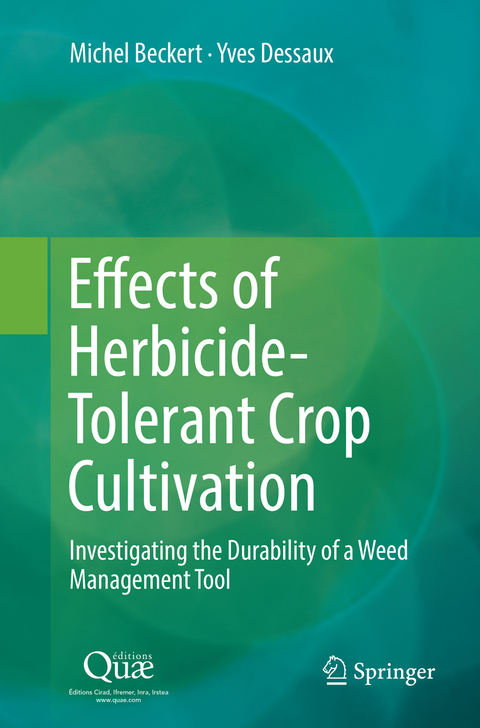
Effects of Herbicide-Tolerant Crop Cultivation
Springer (Verlag)
978-94-024-1463-9 (ISBN)
Overall, this work identifies key points to be taken into account when drawing up guidelines that govern the use of herbicide-tolerant (HT) crops in order to preserve the effectiveness of this innovation over time. This multidisciplinary expert report, based on an international literature review, assesses the effects of the cultivation of crops possessing HT traits. HT crops may appear to be useful complementary tools when farmers are facing certain difficult weed-management situations or in the context of a diversification of weed-control strategies. Their repeated use, however, can rapidly induce changes in the weed flora that can constitute more complex challenges in terms of weed control. Issues coming up with the development of agricultural production systems including HT crops are the objects of this expert report: what are the perceptions of these varieties by society and the reasons for their adoption by farmers? Are the savings on herbicides promoted by seed companies long-lasting? Can the cultivation of HT crops impact biodiversity?
Foreword.- 1. Mechanisms of herbicide resistance and HTV breeding techniques.- 1.1. From herbicide modes of action to genetic determinants of the HT trait.- 1.2. Introducing the HT trait into the genome of a cultivated species.- 1.3. Perspectives on the evolution of HTV breeding techniques.- 1.4. Existing HTVs.- Conclusions.- 2. HTV diffusion and use.- 2.1. HTV adoption worldwide.- 2.2. Possible drivers of HTV adoption.- 2.3. The North American example: the expansion of transgenic HTVs and its consequences.- 2.4. Specificities of the social and regulatory context of HTV adoption in Europe.- Conclusions.- 3. Diffusion of the HT trait and the appearance of herbicide resistance.- 3.1. Mechanisms and consequences of HT trait diffusion.- 3.2. The spontaneous appearance of resistant weeds.- Conclusions.- 4. The development of HTV cropping systems.- 4.1. Effects on weed flora of HTV adoption and associated practices.- 4.2. Conditions specific to the introduction of HTVs inFrance.- Conclusions.- 5. Effects on the environment.- 5.1. Environmental contamination: wetlands and soil.- 5.2. Herbicide residues in and on crop plants.- 5.3. Impacts of HTVs on wild biodiversity.- Conclusions.- General conclusions.- Annex 1. Mission statement for the HTV ESCo.- Annex 2. HRAC classification of herbicides according to site of action.
| Erscheinungsdatum | 27.08.2018 |
|---|---|
| Zusatzinfo | 16 Illustrations, color; 3 Illustrations, black and white; XXI, 146 p. 19 illus., 16 illus. in color. |
| Verlagsort | Dordrecht |
| Sprache | englisch |
| Maße | 155 x 235 mm |
| Themenwelt | Naturwissenschaften ► Biologie ► Botanik |
| Technik ► Umwelttechnik / Biotechnologie | |
| Weitere Fachgebiete ► Land- / Forstwirtschaft / Fischerei | |
| Schlagworte | Crop management strategies • environmental contamination • Herbicide consumption • Herbicide resistant weeds • HT crops • Socio-economic drivers of adoption |
| ISBN-10 | 94-024-1463-0 / 9402414630 |
| ISBN-13 | 978-94-024-1463-9 / 9789402414639 |
| Zustand | Neuware |
| Haben Sie eine Frage zum Produkt? |
aus dem Bereich


